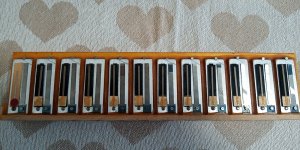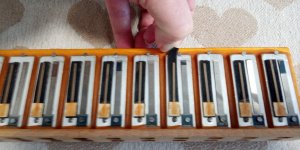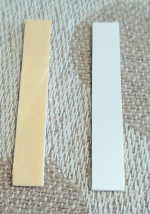I think I mentioned in another thread that I was going to buy an old clunker to practice repairs & tuning on, rather than use my Vox 4P. I found one advertised at The Accordion Centre in Birmingham so went to collect it today. It's a Delicia Choral IV which has definitely seen better days but will do for the purpose I need it for. Andrzej took the accordion into the workshop and pulled it apart for me to let me see the reeds, blocks, etc. and he gave it a quick look over, even replacing 3 broken reeds that he found.
But what was bizarre was that every reed valve except 1 is made of some kind of black foam rubber! The reed block below is from the bass end.

As you can see, the rubber has shrunk to leave a gap between the valve and the reed plate. It is very stretchy stuff though!

Is this some kind of weird Delicia trait, or has some bodger home-made some valves from leftover bellows gasket (or similar)?
But what was bizarre was that every reed valve except 1 is made of some kind of black foam rubber! The reed block below is from the bass end.

As you can see, the rubber has shrunk to leave a gap between the valve and the reed plate. It is very stretchy stuff though!

Is this some kind of weird Delicia trait, or has some bodger home-made some valves from leftover bellows gasket (or similar)?

